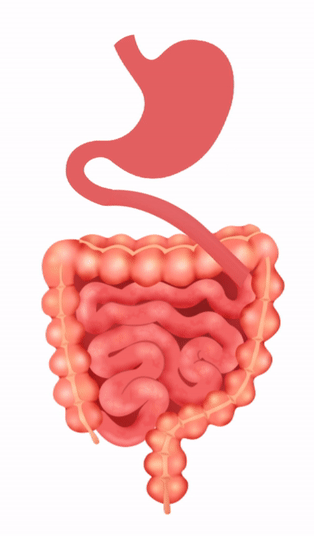Single Anastomosis Duodenoileal Bypass (SADI) - Dallas, Fort Worth, Mansfield & Plano
- Home
- Weight Loss Surgery
- Single Anastomosis Duodenoileal Bypass (SADI)

How Does SADI Work?
- First, the surgeon performs a sleeve gastrectomy to remove approximately 80 percent of the stomach.
- Second, they detach the intestine just below the stomach after which they reattach it to an intestine loop roughly 2 meters down.
Benefits of the SADI-S Procedure
- Reduces the risk of diarrhea and nutritional deficiencies often associated with the duodenal switch
- Gives patients greater weight loss when compared with standard gastric bypass or gastric sleeve, which is great for those with a BMI above 50.
- The SADI-S Procedure can be performed on patients who have undergone sleeve gastrectomy but experienced insufficient weight loss or a relapse.
- Reduces the long-term risk of intestinal obstruction when compared with duodenal switch and gastric bypass.
- It is great for people with poorly controlled Type-2 Diabetes as it offers a more powerful metabolic effect when compared with a standard gastric bypass or sleeve gastrectomy.
- Unlike gastric bypass surgery, patients experience a reduced likelihood of issues such as unstable blood sugar fluctuations, dumping syndrome, marginal ulcers, food restrictions and intolerance.
- Procedure
- Post-Op Care
- Risks & Complications
The placement of Orbera Gastric Balloon into the stomach is a simple, non-surgical outpatient procedure. First, a diagnostic test is done to make sure it is safe to perform the procedure. Then the deflated gastric balloon is inserted through the esophagus and into the stomach. Once it is in position, the balloon is inflated with saline and a dye, to maintain the required size. The procedure takes about 15 minutes to complete. The balloon is temporarily left in the stomach for about 6 months.
After the procedure, you may experience some cramps and nausea, as your stomach adjusts. Your throat may feel a little sore. You’ll follow a liquid or soft diet for a few weeks and followed by 6 months of a supervised diet plan. Our team will continue working closely with you during these 6 months.
As with any other procedure, Gastric balloon procedure involves certain risks and complications:
- Esophageal, gastric ulcers or perforation.
- Deflation of the balloon which can lead to blockage.
- Rupture of balloon dye (if used), which will be released in the urine.
Potential Disadvantages of SADI-S Procedure
Potential risks associated with the SADI-S Procedure are similar to those of any other bariatric procedure. These include:
- Anastomotic leaks
- Infection
- Bile reflux
- Intestinal perforation
- Venous thrombosis and pulmonary embolism
- Bowel obstruction in the long-term
- Abscess
Potential Disadvantages of SADI-S Procedure
Potential risks associated with the SADI-S Procedure are similar to those of any other bariatric procedure. These include:
- Anastomotic leaks
- Infection
- Bile reflux
- Intestinal perforation
- Venous thrombosis and pulmonary embolism
- Bowel obstruction in the long-term
- Abscess




